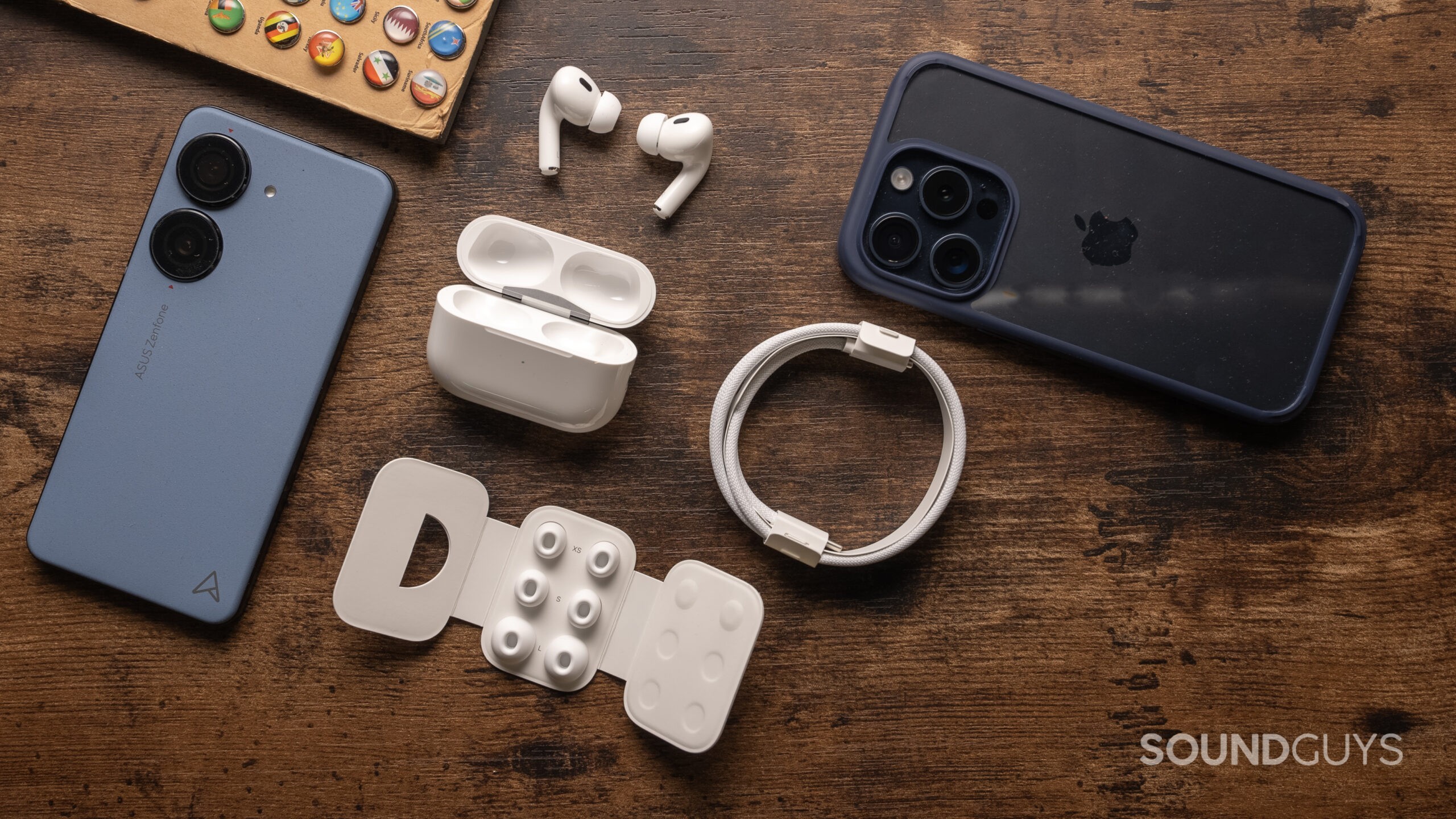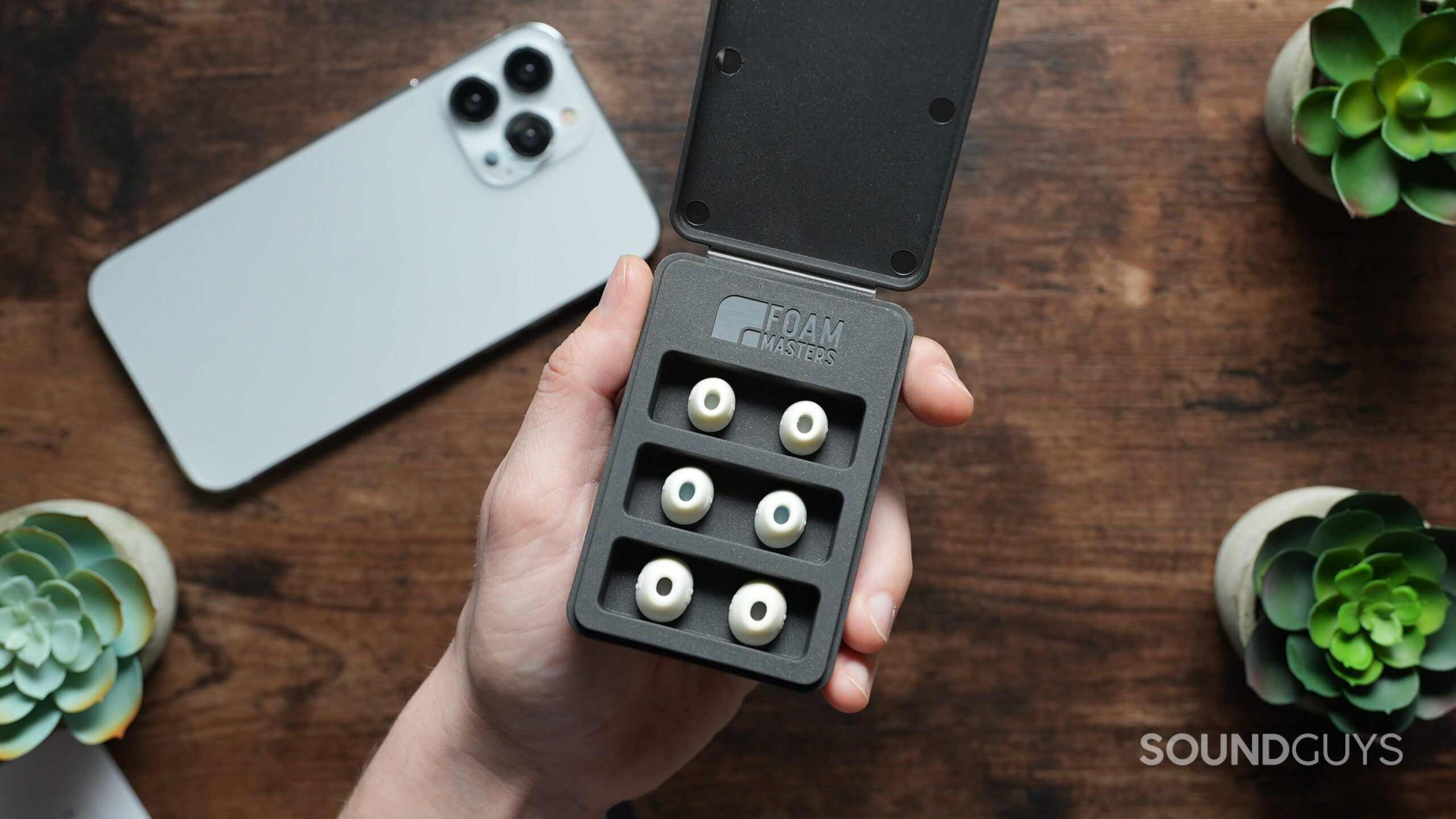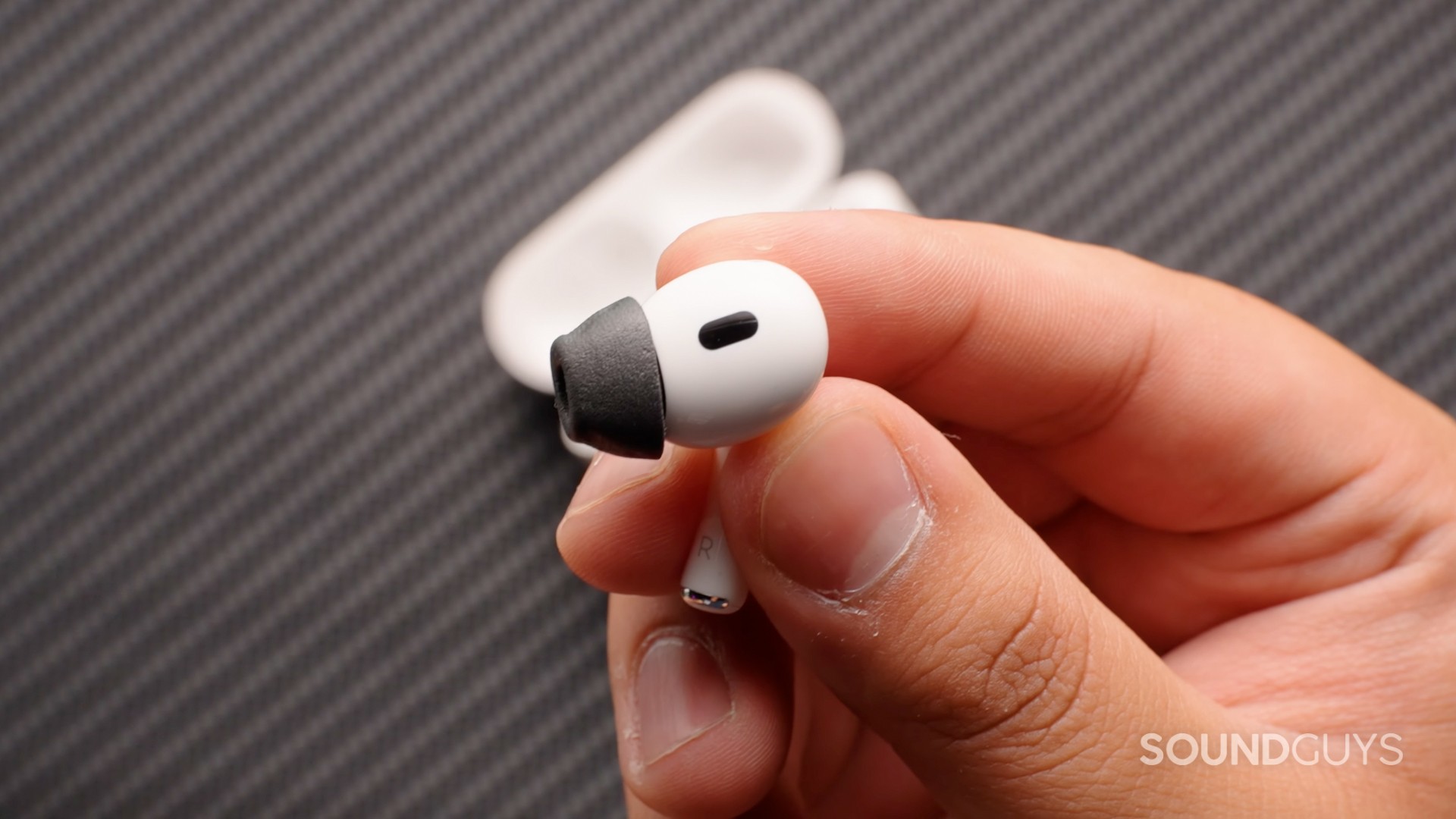All products featured are independently chosen by us. However, SoundGuys may receive a commission on orders placed through its retail links. See our ethics statement.
I fixed the biggest problem with the AirPods Pro 2, and it only cost me $20
August 8, 2025
The AirPods Pro 2 have virtually everything I want in a pair of wireless earbuds, including excellent active noise canceling performance, great sound quality, and seamless integration with my Apple devices. But they have one fatal flaw: they keep falling out of my ears. Fortunately, I found an easy fix, and it didn’t cost me an arm or a leg.
Great fit for some, design flaw for others

The AirPods Pro 2 uses silicone ear tips to try and ensure a proper fit. Apple even includes several different ear tip sizes to help you get the best possible fit. For some people, this is enough. I have friends who own the AirPods Pro 2 that can wear the earbuds without any issues — even during intense workouts. I, unfortunately, am not one of those users. The AirPods Pro 2 are comfortable, sure, but they just don’t stay in my ears. I often find myself having to re-seat the earbuds in my ears while walking down the streets. At the gym, anything that makes me break a sweat, from bench pressing to the elliptical, causes the earbuds to slip out of my ears.
These fit issues aren’t just a matter of ear tip material choices. The AirPods Pro 2 also lack a hook or fin, which we’ve seen in other flagship earbuds, such as the Bose QuietComfort Ultra Earbuds (2nd Gen), Beats Powerbeats Pro 2, or Google Pixel Buds Pro 2. Fit stabilizers, like a hook or fin, provide earbuds with a secondary point of contact with your ear, thus ensuring a secure fit. Unfortunately, the AirPods Pro 2 doesn’t have a secondary point of contact. I can only hope that Apple considers adding some form of fit stabilizer for the upcoming AirPods Pro 3.
In the meantime, is there any way to fix these fit issues without having to buy new earbuds or infiltrate Apple’s design team? Well, yes, and the solution is quite simple: replace the stock silicone ear tips with memory foam ear tips.
The magic of memory foam

Memory foam ear tips over a few advantages over silicone tips. For starters, memory foam is softer and more pliable than silicone. This allows the memory foam ear tips to more easily conform to the shape of your ear canal, thus ensuring a proper seal and secure fit. Switching to foam ear tips has improved my experience using the AirPods Pro 2. I don’t find myself having to re-seat the earbuds as I commute to and from work, and I can finally work out with my earbuds without having to use cumbersome third-party ear hooks.
I’ve also noticed more consistent sound quality and active noise cancellation performance because of the improved fit. With the silicone tips, kick drums and bass lines would start to sound quieter, and the screech of the subway car would grow louder as the earbuds started to slip out of my ears. After switching to foam ear tips, however, I can now enjoy my music without having to worry about the sound quality or ANC performance changing drastically as I commute home. This just goes to show why your in-ear fit matters, and how your it can drastically affect your earbuds’ performance.
The best part? Good memory foam ear tips are pretty inexpensive. You can get a really good set of third-party foam ear tips for $20-30, and sometimes even cheaper during sale events like Amazon Prime Day or Black Friday. Popular brands include Comply and Foam Masters, but you can also check out some lesser-known brands to save some cash.
An imperfect solution

Switching to memory foam ear tips may sound like a great solution, but there are a few drawbacks you should be aware of. Firstly, because of its pliable nature, memory foam ear tips aren’t as durable as silicone ear tips. For the best performance, you should plan to replace your foam ear tips every three months, or whenever you notice your earbuds starting to slip out more than usual. The exact timeline depends on a variety of factors, including how often you use your earbuds, cleaning habits, etc.
Secondly, memory foam ear tips are harder to clean than silicone ear tips. This is because memory foam is porous, which means it can easily absorb earwax, oil, and other debris. Rather than running the ear tips under water, you’ll want to clean your foam ear tips by gently wiping with a soft, damp cloth.
These drawbacks could be a dealbreaker for some. However, I’m personally willing to live with these inconveniences as long as I don’t have to worry about having my AirPods accidentally falling out of my ear and into a sewer grate.
Which earbuds would you buy?
Thank you for being part of our community. Read our Comment Policy before posting.